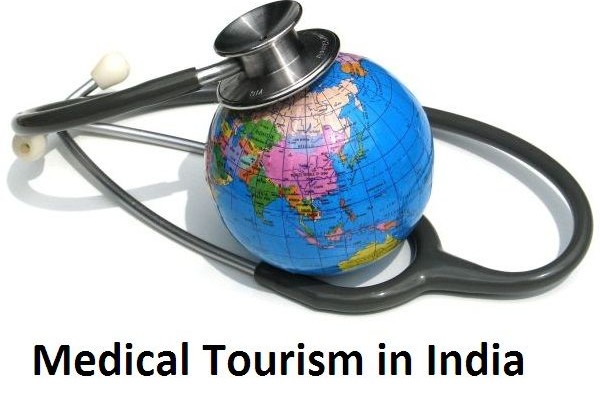The rise of medical tourism in Asia over the last few years has been phenomenal. Along with the huge opportunity for growth, it also brought along a need for Asian healthcare providers to meet world-class standards of patient care in order to attract patients from the developed nations, especially USA.
This change has been particularly visible in the Indian healthcare sector, which has grown with the steady influx of foreign patients. Coupled with the rise of the private sector, medical tourism has put India firmly on the global healthcare destinations map.
With the best infrastructure, the best possible medical facilities, and the most competitive prices, India continues to attract patients. While this happens, however, remaining competitive over the long run will require them to develop core competencies unique to India.
The core competence
India has been able to keep pace with the latest in technology and its applications, has been widely felt in the healthcare industry. That is to say, Indian hospitals offer the modern medical treatments available in other parts of the developing world as well. In such a scenario, the biggest differentiator could be the cost of treatment. But costs are bound to rise and as that happens its value as a key differentiator comes down.
In the long run a value add-on unique to India could be the best differentiator. In this case, considering the knowledge base that has its roots in the country since past several centuries, Ayurveda is an emerging option.
Renowned for ancient alternative therapies such as Ayurveda, Yoga and Meditation, India has historically proved to be an oasis in the modern world, providing complete health and well being.
Dr RV Karanjekar, former Medical Director at the Fortis Heart Institute, observed at a medical tourism conference in 2005* and said, “India will have to project itself as being a holistic medical destination to get an edge over other countries”.
A small beginning seems to have been made in this regard with Apollo Hospitals announcing plans to start an Ayurveda-centred healthcare city. Sangita Reddy, Executive Director, Apollo Hospitals Group says regarding Apollo’s plans, “In keeping with our view to provide holistic care for improved quality of life, we have set up an Ayurveda centre that provides outpatient consultation and treatment therapies for a range of conditions.”
Besides Apollo, AyurVAID Hospitals, a Kerala-based chain of hospitals offering exclusive Ayurvedic medical services opened its centre recently. Ganesh Subramaniam, one of the promoters says, “There is a void in mainstream healthcare which is being effectively complemented by Ayurveda. To that extent, appropriately integrating the two will enable delivery of comprehensive healthcare services to the market.”
A need to explore synergies
The greatest hurdle to the integration of Ayurveda into mainstream healthcare could come from the fact that the two are inherently different.
While today’s medicine is driven by published evidence, little or no evidence exists in regard to the treatments offered by Ayurveda. Further, research in this direction is little or non-existent. This is the key deterrent to integration of Ayurveda into mainstream healthcare. And till it is sorted out, Ayurveda might continue to be used only on the periphery of mainstream healthcare, like, in case of Apollo, its outpatient department.
The entry of private players in the Ayurveda sector, however, could be the much needed initiative for bridging the gap that exists between Ayurvedic and allopathic medicine. As Sangita Reddy points out, Apollo plans to carry out research through the Apollo Hospitals Education and Research Foundation (AHERF) and look into the possibilities of some groundwork in this area with a focus on chronic conditions.
This change in approach of India’s private sector towards Ayurveda is a sign of the Indian healthcare sector, “coming into its own on the strength of its value proposition in terms of the global quality of care at about a fraction of the cost”, adds Sangita Reddy.
A brief history of medical tourism
The concept of medical tourism is as old as medicine itself. In olden times, Asian countries had their own alternative/herbal medicine long before modern medicine came in.
Some examples include:
• People from France, Britain, Ireland and Italy travelled to Germany for spa treatment
• Europeans went to Egyptian Nile River to experience hot mineral water baths
• In China, traditional herbal preparations accounted for 30 per cent-50 per cent of the total medical consumption
• In Ghana, Mali and Nigeria, the first line of treatment for 60 per cent of children with high fever is use of herbal medicine
• In India, yoga and ayurveda attracted a constant influx of medical scholars and travellers from all over Europe and Middle East hoping to master and benefit from these revered branches of alternative medicine.
In the modern times it has acquired a new dimension. Low cost of the diagnostic procedures and the efficiency of the medical treatments is a guiding force that brings the patients from all over the world into the Asian hospital premises.
With the underinsured and uninsured population growing in the US, the need to lower the medical costs increased. That was not easy and thus started the outflow of the patients. Asia seemed to be right destination with low cost and high quality services. Asian hospitals had to achieve tough international patient safety standards, like the ones promoted by the Joint Commission International (JCI).
India is one of the preferred destinations in the world for Medical Tourism. Most familiar treatments include heart surgery, knee transplant, cosmetic surgery and dental care. In the year 2007, around 272,000 medical tourists visited India and brought revenue of US $ 656 Million. India has also come up with its own accreditation system through the National Accreditation Board for Hospitals & Healthcare Providers under the Government of India.
Contributed by,
Vandana Wadhawan
Member of Editorial Team, Asian Hospital & Healthcare Management






